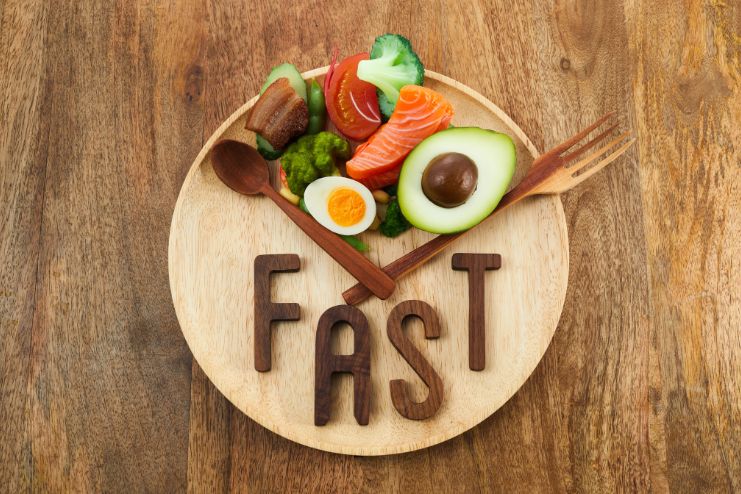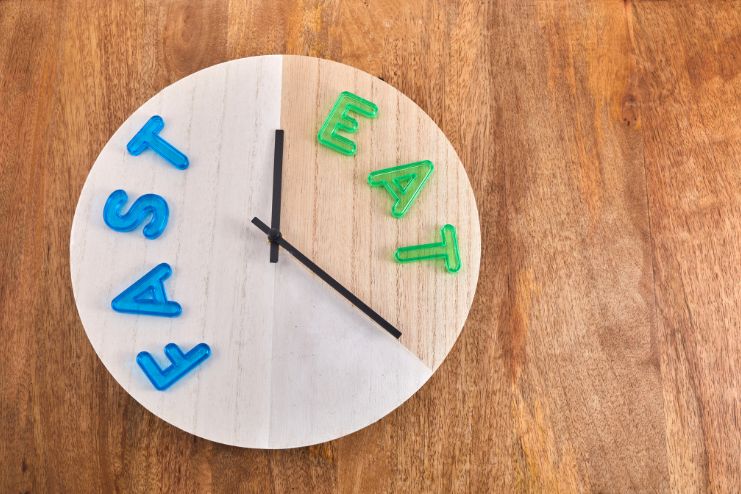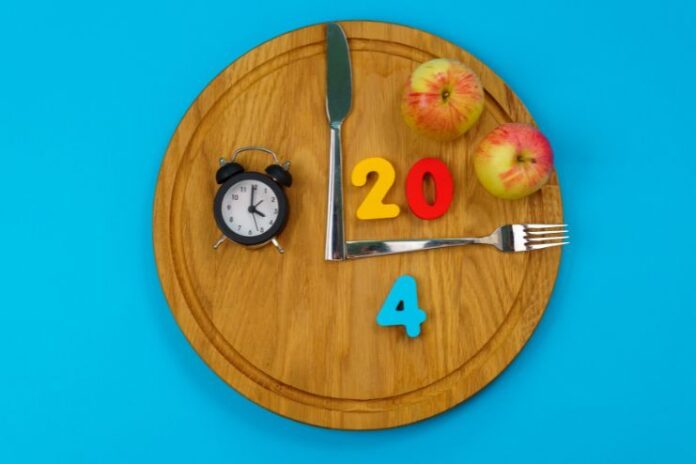Extreme intermittent fasting plans have flooded the wellness world, each claiming to fast-track fat loss and boost mental clarity. The Warrior Diet stands out for its bold promise: eat one meal a day at night and fast for the rest of the day. But does this ancient-inspired plan live up to the hype, or is it another fleeting trend?
Popularized as a return to the eating habits of ancient warriors, the Warrior Diet has sparked both interest and debate. Before jumping into this 20:4 intermittent fasting approach, it’s worth exploring how it works, what science says, and who it’s best suited for.
Read More: Is Intermittent Fasting Safe for Women? What Experts Recommend
What Is the Warrior Diet?

The Warrior Diet was developed during the early 2000s by Ori Hofmekler, a former member of the Israeli Special Forces and fitness expert. It’s based on the theory that warriors in ancient times ate very little throughout the day and ate lavishly at night—a cycle potentially in tune with the body’s natural rhythms.
This eating plan has a 20:4 window of intermittent fasting: 20 hours of undereating (not complete fasting), then a 4-hour window of feasting, usually in the evening. In contrast to typical one-meal-a-day (OMAD) diets, the Warrior Diet permits small amounts of raw vegetables, fruits, teas, and liquids during the fasting period.
It is considered one of the stricter methods of intermittent fasting and time-restricted eating, designed to encourage fat loss, metabolic flexibility, and other benefits associated with fasting.
Read More: The Do’s and Don’ts of Intermittent Fasting: Common Mistakes to Avoid
How the Warrior Diet Works

The Warrior Diet has two phases: the fasting phase (daytime) and the feasting phase (nighttime). Both have guidelines and objectives that affect the way your body metabolizes fuel, manages hunger, and adapts hormonally.
Fasting Phase (Daytime)
Throughout the 20-hour fasting period, the body is fat-burning. Although strict fasting is not necessary, one should try to keep calorie levels low and avert insulin peaks. Permitted foods and drinks include:
- Raw fruits and vegetables in small quantities.
- Black coffee and herbal teas.
- Water and electrolyte-containing fluids (unsweetened).
The phase helps to:
- Improve alertness and clarity of mind.
- Encourage lipolysis (burning of fat).
- Induce autophagy, the body’s cellular cleaning process.
Feasting Phase (Nighttime)
The feasting portion is in a 4-hour window in the evening. Here, the nutrient intake from the day is in one big, balanced meal. The focus is on whole foods that are nutrient-dense for fuel. These help with recovery and maintain metabolic balance.
Typical items found in a Warrior Diet meal:
- Lean proteins: chicken, eggs, turkey, fish.
- Healthy fats: olive oil, nuts, seeds, avocado.
- Complex carbs: quinoa, sweet potatoes, lentils.
- Non-starchy vegetables: spinach, broccoli, kale.
Read More: Navigating the Paleo Diet: Pros, Cons, and Practical Tips for Beginners
Potential Benefits of the Warrior Diet

Here are a few more reasons that make the Warrior Diet a preferred choice:
Improved Insulin Sensitivity:
Prolonged fasting has also been demonstrated to promote insulin sensitivity and decrease circulating insulin. This is helpful for blood sugar control and can lower type 2 diabetes risk, particularly if the evening meal is comprised of low-refined carb intake.
Fat Loss and Metabolic Flexibility:
The Warrior Diet encourages fat loss through the prolonged fasting window and helps the body get accustomed to using fat for energy. The extended fasting period can:
- Enhance lipolysis and ketone release.
- Enhance metabolic flexibility (oscillation between carb and fat fuel sources).
- Suppress hunger due to high levels of ketones.
These effects can help overcome weight-loss plateaus in some individuals, particularly when paired with regular physical activity.
Increased Growth Hormone and Autophagy:
Fasting promotes the secretion of human growth hormone (HGH), which involves fat metabolism, muscle maintenance, and recovery. The prolonged fast also induces autophagy, the body’s recycling process, while removing damaged cells.
Mental Clarity and Energy:
Most followers experience increased mental acuity, enhanced productivity, and more efficient energy levels during the fasting period. This is due to a decrease in blood sugar fluctuations and the stimulating role of catecholamines secreted during fasting.
Risks and Drawbacks

Despite its potential, the Warrior Diet comes with several concerns and limitations that should not be overlooked.
- Nutrient Deficiencies: Consuming only one meal a day may make it difficult to meet daily requirements for fiber, calcium, magnesium, and key vitamins like B12 and D. Without careful planning, the diet can lead to long-term imbalances.
- Disordered Eating Habits: The feast-fast pattern can induce binge-eating habits or encourage food obsession in others. This type of pattern can worsen pre-existing disordered eating disorders, if any.
Warrior Diet vs. Other Fasting Methods

We must compare the Warrior Diet to other methods to ascertain whether it is better or worse. Here’s a comparison between the Warrior Diet and other methods.
Warrior Diet vs. OMAD (One Meal a Day)
While both involve consuming one big meal, the Warrior Diet permits small snacks within the fasting time, offering more flexibility. OMAD normally consists of a complete 24-hour fast between meals.
Warrior Diet vs. 16:8 Intermittent Fasting
The 16:8 method provides an 8-hour window of eating, which is easier for newbies and simpler to maintain over the long term. The Warrior Diet is more strict but potentially provides faster benefits because of the longer fast.
Warrior Diet vs. Traditional Calorie Restriction
Rather than counting calories every day, the Warrior Diet uses meal timing to attain a caloric deficit. For others, this is more natural and less constricting. However, it does require attention to food choice to prevent nutrient deficiencies.
Not Suitable for Everyone
The Warrior Diet is not suitable for:
- Those with diabetes or hypoglycemia.
- Pregnant or nursing women.
- Endurance athletes requiring high calories.
- Those with a history of eating disorders.
Note: Women who practice extreme fasting, particularly if their caloric intake is chronically too low, may have irregular periods or hormonal disturbances.
Read More: OMAD vs. 16:8: Which Intermittent Fasting Method Is Right for You?
What to Eat on the Warrior Diet

Planning the right meal during the feasting window is essential. The goal is to nourish your body completely without overeating or relying on junk food. A typical Warrior Diet meal could include:
- A palm-sized portion of lean protein (e.g., grilled chicken or tofu).
- A generous serving of leafy greens and non-starchy vegetables.
- Healthy fats like olive oil, tahini, or avocado.
- A moderate serving of complex carbs, such as sweet potatoes or brown rice.
Skip these foods to help improve results:
- Ultra-processed foods: Snack foods, frozen meals, prepared meals.
- Refined sweeteners: Pastries, sodas, sweet yogurts.
- Fried foods: Chips, fried chicken, and fast food.
Adding spices, herbs, and fermented foods can help enhance flavor and digestion in your eating window.
Expert Opinions and Scientific Research

There are a few clinical trials specifically on the Warrior Diet. But broader studies on intermittent fasting and time-restricted eating confirm many of its benefits:
- Intermittent fasting enhances insulin sensitivity, blood pressure, and lipid profiles.
- Time-restricted eating improves metabolic health indicators even in the absence of weight loss.
Still, most experts agree that more research is needed on the long-term effects of such an extreme regimen. Nutritionists point out the necessity of nutrient content and individual variability in the Warrior Diet.
Should You Try the Warrior Diet?

This diet can work for:
- Busy professionals looking for an easy eating plan.
- Those who have plateaued on regular intermittent fasting regimens.
- Night owls who like to eat at night and skip breakfast/lunch.
However, it’s best avoided by individuals with high energy needs, medical conditions, or a history of disordered eating. If you decide to try it:
- Begin gradually by gradually reducing the eating window.
- Monitor energy levels, hunger signs, and performance.
- Make each meal nutrient-dense and sufficiently portioned.
- Drink water regularly throughout the day.
Read More: Quick and Healthy Sheet Pan Dinners: Minimal Effort, Maximum Flavor
Final Thoughts

The Warrior Diet is a restrictive, time-limited eating regimen that can help some individuals lose fat, enhance concentration, and develop metabolic strength. Yet, it’s no magic fix—and definitely not one-size-fits-all. Like any diet, its success is contingent upon adherence, food quality, and individual context.
If you’re interested in trying the Warrior Diet, do so with caution. Do consider consulting a nutritionist, particularly if you have pre-existing health issues. Dining like a warrior may be strong, but only if approached with care and the right knowledge.
References
- https://www.health.com/weight-loss/warrior-diet
- https://www.health.com/weight-loss/omad-diet
- https://www.everydayhealth.com/diet-nutrition/what-is-the-warrior-diet-the-intermittent-fasting-plan-reviewed/
- https://www.onlymyhealth.com/how-does-the-warrior-diet-for-weight-loss-work-1718268918
- https://www.sciencedirect.com/science/article/pii/S2589004224002219
In this Article















